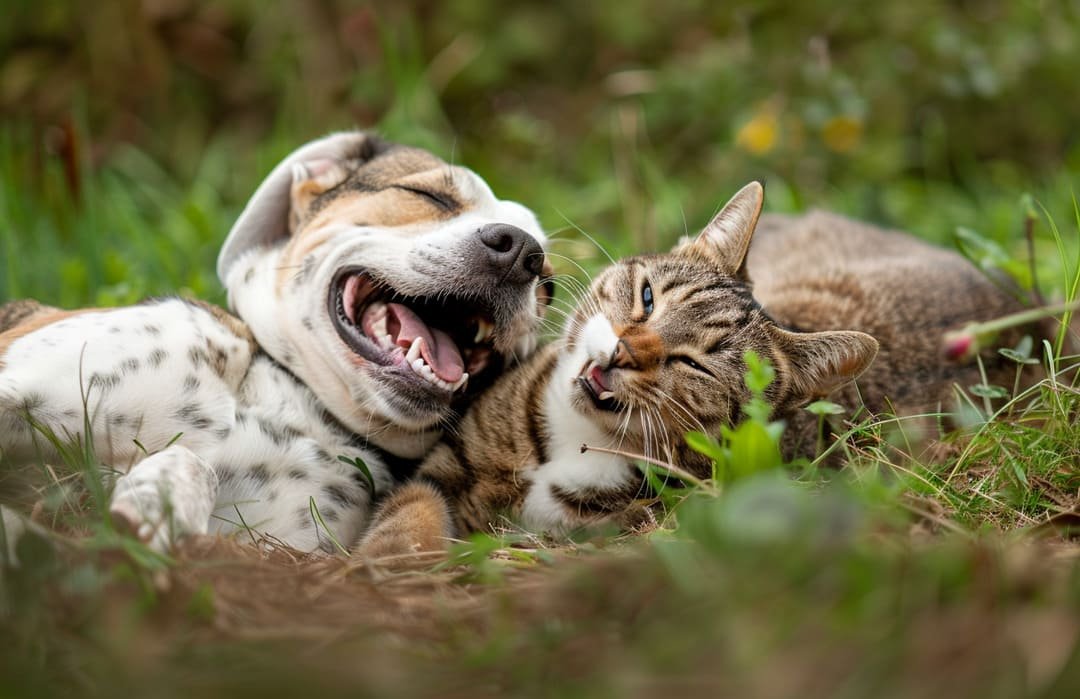Training a stubborn cat can be a challenging yet rewarding endeavor for pet parents looking to enhance their feline companion's behavior and strengthen their bond. Have you ever found yourself struggling to get your cat to respond to commands or modify unwanted behaviors? In this comprehensive guide on how to train a stubborn cat, we will explore proven strategies, effective techniques, and valuable insights to help you navigate the unique world of feline training with confidence and success. Let's embark on this journey together to unlock the secrets of mastering pet parenting with your beloved four-legged friend.
Understanding Cat Behavior and Psychology
Cats are known for their independent and sometimes stubborn nature, which can make training a bit challenging. It's essential to understand the underlying reasons behind your cat's behavior to effectively train them. Here are some key points to consider:
-
Natural Traits of Cats: Cats are territorial animals with specific instincts related to hunting, grooming, and marking their territory. This can influence their behavior during training sessions.
-
Common Reasons for Stubborn Behavior: Cats may exhibit stubbornness due to fear, stress, or simply a strong-willed personality. Identifying the root cause can help tailor your training approach.
-
Importance of Patience and Consistency: Training a stubborn cat requires patience and consistency. Rushing the process can lead to setbacks, while regular practice and positive reinforcement can yield better results over time.
Understanding your cat's behavior and psychology is the first step towards successful training. By approaching training with empathy and knowledge of your feline friend's instincts, you can create a harmonious relationship built on trust and respect. Remember, every cat is unique, so adjust your training methods to suit your pet's individual needs.
For more in-depth insights into cat behavior and training techniques, you may find valuable resources at PetSmart's training guide.
Creating a Positive Environment for Training
When it comes to training a stubborn cat, creating a conducive environment is key to fostering successful learning experiences. Here are some essential aspects to consider:
-
Setting up a Comfortable and Safe Space: Cats thrive in environments where they feel secure and comfortable. Designate a quiet and cozy area for training sessions to minimize distractions and stress.
-
Providing Stimulating Toys and Activities: Engage your cat's natural curiosity and energy by incorporating interactive toys and activities into training. This can make the learning process more enjoyable and rewarding.
-
Utilizing Positive Reinforcement Techniques: Positive reinforcement, such as treats, praise, and play, can encourage desirable behaviors in your cat. Rewards help reinforce good behavior and create a positive association with training.
By creating a positive and inviting training environment, you can enhance your cat's receptiveness to learning and promote a harmonious training experience. Remember, patience, consistency, and a supportive setting are essential elements in guiding your stubborn cat towards successful training outcomes.
Establishing a Training Routine
Consistency and structure are essential when training a stubborn cat. By establishing a clear training routine, you can effectively communicate expectations and reinforce positive behaviors. Here are some key elements to include in your training regimen:
-
Setting Clear Training Goals: Define specific objectives for each training session, whether it's teaching your cat to use a scratching post or to come when called. Clear goals help track progress and maintain focus.
-
Creating a Consistent Schedule: Cats thrive on routine, so schedule training sessions at regular intervals to help your cat anticipate and prepare for learning opportunities. Consistency can lead to better retention of trained behaviors.
-
Incorporating Short Training Sessions: Cats have shorter attention spans compared to dogs, so keep training sessions brief and engaging. Aim for multiple short sessions throughout the day to maintain interest and prevent mental fatigue.
By following a structured training routine tailored to your cat's personality and learning style, you can establish a positive training environment that promotes successful outcomes and strengthens your bond with your feline companion.
Using Effective Training Techniques
Training a stubborn cat requires innovative and effective techniques that cater to their individual temperament. By utilizing proven methods of motivation and reinforcement, you can guide your feline friend towards desired behaviors. Here are some techniques to consider:
-
Clicker Training for Positive Reinforcement: The clicker training method involves using a clicker device paired with treats to reward desired behaviors instantly. This technique creates a clear association between the click sound and positive outcomes, making learning more engaging for your cat.
-
Target Training for Desired Behaviors: Target training involves teaching your cat to touch a designated object, such as a stick or target stick, to perform a specific action. This technique helps focus your cat's attention and facilitates learning new commands or tricks.
-
Avoiding Punishment-Based Methods: Punishment-based training can lead to fear and stress in cats, resulting in aggressive or avoidant behaviors. Instead of punishment, focus on rewarding good behavior and redirecting negative actions in a positive manner.
By incorporating these effective training techniques into your routine, you can encourage your stubborn cat to learn and thrive in a supportive and engaging training environment. Remember, each cat is unique, so be patient and adapt your approach to suit your furry companion's needs.
Handling Challenges and Setbacks
Training a stubborn cat can come with its fair share of challenges and setbacks, requiring patience and adaptability on the part of the pet parent. It's crucial to recognize signs of stress or resistance in your cat and adjust your training approach accordingly. Here are some strategies to help you navigate obstacles in training:
-
Recognizing Signs of Stress or Discomfort: Common signs of stress in cats include flattened ears, dilated pupils, excessive grooming, or hissing. If you notice these signs during training, give your cat a break and reassess the approach to avoid overwhelming them.
-
Adjusting Training Strategies Based on Individual Needs: Each cat has a unique personality and learning style, so be flexible in your training methods. Tailor the approach to suit your cat's preferences and comfort level, ensuring a positive and effective training experience.
-
Seeking Professional Help if Necessary: In cases where your cat exhibits extreme fear or aggression during training, consider consulting a professional animal behaviorist or trainer. They can provide expert guidance and personalized strategies to address challenging behaviors.
Navigating challenges and setbacks in cat training is an integral part of the learning process. By staying attuned to your cat's cues, adapting your methods as needed, and seeking assistance when required, you can work through obstacles and create a harmonious training environment for your feline companion.
Celebrating Progress and Building Trust
Training a stubborn cat is a journey that requires dedication, patience, and a positive mindset. Celebrating small victories along the way not only highlights your cat's progress but also strengthens the bond between you and your furry companion. Here's how you can acknowledge achievements and foster trust in your training process:
-
Tracking Training Milestones: Keep a training journal or log to document your cat's advancements, such as mastering a new trick or exhibiting improved behavior. Reflecting on these milestones reinforces the positive impact of your efforts and motivates both you and your cat to continue learning.
-
Building a Strong Bond Through Training: Training sessions offer valuable bonding opportunities with your cat. Use this time to communicate, interact, and nurture your relationship through positive reinforcement and shared experiences. A strong bond builds trust and cooperation between you and your pet.
-
Enjoying the Journey of Mastering Pet Parenting: Embrace the training process as a learning experience for both you and your cat. Enjoy the moments of growth, learning, and mutual understanding that come with overcoming challenges and achieving goals together. Remember, the journey of pet parenting is as rewarding as the destination.
By celebrating progress, building trust through training, and cherishing the moments shared with your cat, you embark on a fulfilling and enriching journey of mastering pet parenting and creating a lasting bond with your beloved feline companion.
Additional Resources and Further Learning
For those seeking more guidance and information on how to train a stubborn cat, there are various resources and tools available to support your training journey. Here are some recommendations to aid in your ongoing learning and improvement:
-
Recommended Books and Online Resources: Explore books such as "Think Like a Cat" by Pam Johnson-Bennett or websites like the American Association of Pet Dog Trainers (APDT) for valuable insights on cat behavior and training techniques.
-
Tips for Ongoing Learning and Improvement: Stay informed and engaged in your cat's training by attending workshops, webinars, or classes focused on feline behavior and positive reinforcement training methods. Continuous learning enhances your skills as a pet parent and strengthens your relationship with your cat.
-
Connecting with Other Pet Parents: Join online forums, social media groups, or local pet parenting communities to connect with fellow cat owners facing similar training challenges. Sharing experiences, tips, and advice can offer support and new perspectives on training a stubborn cat.
By leveraging additional resources, staying proactive in your learning approach, and networking with other pet parents, you can enrich your training journey and cultivate a deeper understanding of your cat's behavior and training needs. Remember, learning is an ongoing process, and each step taken towards mastering pet parenting contributes to a fulfilling and rewarding bond with your feline companion.
FAQs on How to Train a Stubborn Cat
How do I deal with a cat that refuses to listen during training sessions?
It's essential to approach training with patience and understanding. If your cat seems unresponsive, take a break, reassess your training methods, and consider adjusting the environment or using different motivators to capture their interest.
What are some effective positive reinforcement techniques for training a stubborn cat?
Positive reinforcement techniques such as clicker training, treat rewards, and interactive play can be highly effective in encouraging desired behaviors in cats. Offering incentives and praise for good behavior helps reinforce positive associations with training.
How long should training sessions be for a stubborn cat?
Training sessions for cats should be kept short and engaging, typically ranging from 5 to 15 minutes. Cats have shorter attention spans than dogs, so frequent but brief sessions throughout the day can be more effective than long, intensive training sessions.
My cat is fearful during training sessions. What should I do?
If your cat shows signs of fear or stress during training, it's important to create a calm and safe training environment. Slow down the training pace, use positive reinforcement to build confidence, and consider seeking guidance from a professional behaviorist if needed.
How can I maintain consistency in training my cat?
Consistency is key in cat training. Establish clear training goals, create a regular training schedule, and ensure that all family members are on the same page regarding training methods and commands. Consistency helps reinforce learned behaviors and promotes a sense of security for your cat.


